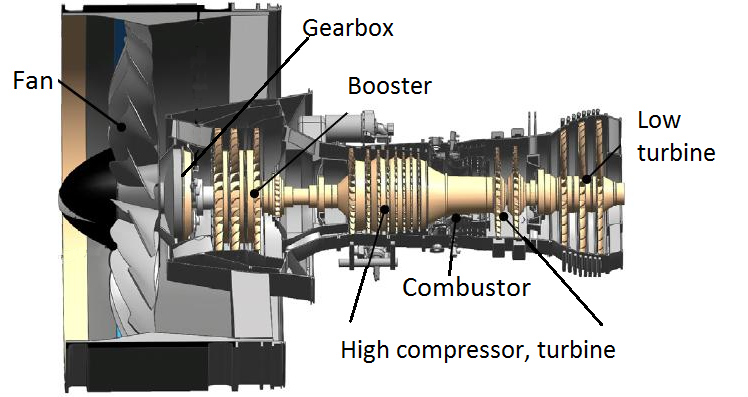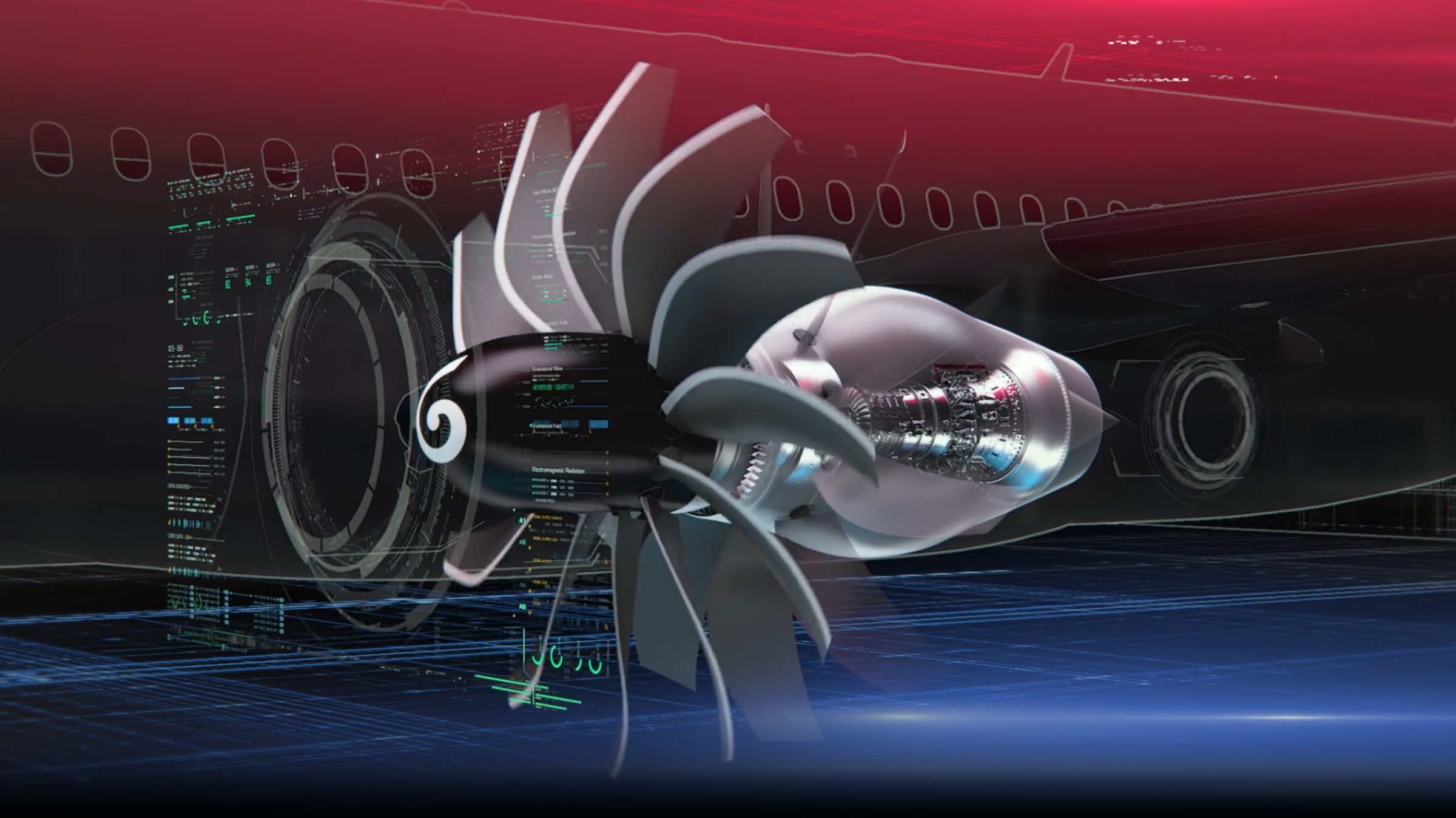Leeham News and Analysis
There's more to real news than a news release.
Bjorn’s Corner: New engine development. Part 5. Turbofan design problems
April 26, 2024, ©. Leeham News: We do an article series about engine development. The aim is to understand why engine development now dominates new airliner development when it comes to the needed calendar time and risks.
To understand why engine development has become a challenging task, we need to understand engine fundamentals and the technologies used for these fundamentals.
We discussed geared versus direct-drive turbofans last week. Now, we’ll examine some design problems for these engines.
Bjorn’ s Corner: Engine development. Part 1. Introduction
March 29, 2024, ©. Leeham News: We finished our article series about New Aircraft Technologies last week. It dealt with the different new technologies that a next-generation airliner could use to increase efficiency and by it environmental emissions.
An area that we touched upon but didn’t dig deeper into was engine development. When airframe development historically decided how long a new generation of aircraft took to develop, it gradually changed to engine development being the more calendar-time-consuming and riskier development for the last generations. This article series will discuss why and what can be done about it.
RTX FY and Q4 2023 Earnings: Pratt GTF Propulsion Prognosis Improves, Collins Enjoys Widebody Renaissance Tailwinds
By Chris Sloan
Jan. 23, 2024, (c) Leeham News:  RTX, the parent company of Pratt & Whitney and Collins Aerospace, reported during its fourth-quarter earnings call slivers of good news in the GTF program, which enters its ninth year of service – mostly in the headlines for the wrong reasons of poor reliability. Despite beating performance guarantees, the beleaguered powerplant family has been besieged by durability, operational, and production shortcomings since it entered service with the inauguration of Airbus A320neo service by Lufthansa back in January 2016 and EIS with the Bombardier C Series operated by Swiss (now Airbus A220) in July 2016.
RTX, the parent company of Pratt & Whitney and Collins Aerospace, reported during its fourth-quarter earnings call slivers of good news in the GTF program, which enters its ninth year of service – mostly in the headlines for the wrong reasons of poor reliability. Despite beating performance guarantees, the beleaguered powerplant family has been besieged by durability, operational, and production shortcomings since it entered service with the inauguration of Airbus A320neo service by Lufthansa back in January 2016 and EIS with the Bombardier C Series operated by Swiss (now Airbus A220) in July 2016.
The overall money metrics picture is upbeat despite weakness in military-based segments, higher production costs, and the continued Odyssey of the Pratt Geared TurboFan platform.
Pratt & Whitney reported an ascendant fourth quarter 2023 sales trajectory of $6.4 billion – up 14 percent versus the prior year. Commercial OE drove a 20% increase, while aftermarket rose 18%. Pratt reported $23.6 billion in sales for the entire year – an increase of 25%. Pratt’s full-year operating profit climbed by 25% versus 2023 to $382 million. The propulsion producer attributed its full-year profit growth to higher commercial aftermarket and OE mix.
Analysts were cautiously optimistic about the results. “While it’s no doubt a positive that the GTF is on track, there is still quite some way to go before RTX can declare ‘mission accomplished.’ But if RTX can hit its targets on GTF and also gradually improve the performance at Raytheon, then the stock looks inexpensive at 14.5x 2025 P/E,” said Vertical Research Analyst Robert Stallard.
2024 Outlook: A Mixed Bag for Propulsion OEMs
Subscription Required
By Chris Sloan and Gordon Smith
January 11, 2033, © Leeham News: In 2023, a slew of problems plagued propulsion providers, with Pratt & Whitney’s GTF Engine and supply-chain shortcomings grabbing the bulk of negative headlines and customer complaints. There were bright spots for all the big three with a slew of significant orders, emerging technologies, and critical management shifts.
shortcomings grabbing the bulk of negative headlines and customer complaints. There were bright spots for all the big three with a slew of significant orders, emerging technologies, and critical management shifts.
As the calendar turns to 2024, all eyes will be on a return to fulfilling enormous backlogs, supporting OEM production rate increases, and returning GTF-propelled planes to the skies – while edging towards new technologies, both incremental and revolutionary.
Summary
- Pratt and its operators navigate massive AOGs (aircraft on ground) and unhappy customer claims for its GTF.
- The GTF Advantage closes in on EIS.
- GTF maladies open the door to a possible new platform, the long-mooted Airbus A220-500.
- The X66A Tranonic-Truss-Braced Wing offers promise for both Pratt’s GTF and GE’s future RISE engines.
- GEnx and GE-9X win blockbuster campaigns on the 787 and 777X as the 777X hurtles toward certification.
- CFM’s LEAP goes from strength to strength on the heels of MAX orders and 737-7 and 737-10 certification and entry-into-service.
- Fixing LEAP durability and delivery challenges.
- Rolls-Royce Trent troubles continue to draw the ire of customers.
- UltraFan testing moves forward in Roll’s quest to build a next-generation engine platform for the 2030s. Read more
Re-engining the Boeing 767, Part 2
Subscription required
By Bjorn Fehrm
December 14, 2023, © Leeham News: We are looking at a re-engine of the 767, a move that Boeing is considering to avoid a production stop after 2027. The present 767 engines don’t pass emission regulations introduced by FAA, EASA, and other regulators for production and delivery beyond 2027.
We have described the history of the 767 and the key data of the different variants in last week’s article. Now, we look at what airframe modifications are necessary to house more efficient engines and what consequences these bring.
Summary:
- New, more environmentally friendly engines for the 767 mean changes to the landing gear and structures to house larger and heavier engines.
- For the payload capacity to stay the same a deeper grab in the 767-400 toolbox is necessary than just adopting the landing gear.
Pontifications: Airbus ponders A330neo MRTT, Boeing ponders KC-46A re-engine
By Scott Hamilton
Nov. 28, 2023, © Leeham News: In a reversal of intent, the airplane that Airbus may submit to the US Air Force for the next round of aerial tanker procurement may be based on the A330neo instead of the current production A330-200ceo MRTT.
The Air Force, however, may forego competition between Airbus and Boeing and place a sole-source follow-on order with Boeing for the KC-46A tanker, based on the 767-200ER. Boeing already has a contract for 179 KC-46As, and the USAF appears to be leaning toward a sole-source award. Political pressure from Airbus partisans and others who favor competition may prevail.
Related articles
- Airbus to develop second generation MRTT based on A330neo. (Aviation Week.)
- Lockheed Martin sees MRTT as complimentary to KC-46A
- Lockheed bows out, Airbus to continue, Boeing favored in tanker procurement
Airbus wants to discontinue production of the A330-200ceo-based MRTT. The neo-based version would be based on the A330-800. Sales of the -800 are poor—fewer than 20 have been ordered. An -800 based MRTT will breathe life into the nearly still-born model.
- Boeing considers re-engining the 767-300ERF and the KC-46A.
- KC-46A, 767-200, A330 MRTT exempt from 2027 ICAO standards.
RTX Q3 Earnings: Pratt GTF Powder Contamination Problem Guidance Largely Unchanged, But Big Questions Loom
By Chris Sloan
Oct. 24, 2023, (c) Leeham News: “I believe we have our arms around the operational and financial impacts of the powdered metal issue,” said Greg Hayes, RTX Chairman and Chief Executive Officer, during today’s third quarter earnings call primarily dominated by the Pratt & Whitney GTF powerplant’s ongoing quality control saga.
RTX Chairman and Chief Executive Officer, during today’s third quarter earnings call primarily dominated by the Pratt & Whitney GTF powerplant’s ongoing quality control saga.
“With the analysis substantially complete, we do not expect any significant incremental financial impact as a result of those fleet management plans,” Hayes emphasized, with Pratt re-affirming its September projections with no changes to the previous recalls.
Pontifications: “We’re sick and tired of new technologies:” Avolon CEO
Editor’s Note: As Airbus and Boeing consider new airplanes, their current generation aircraft are plagued with technical issues. The engines on the A320neo and 737 MAX families continue to have problems years after entry into service. The Boeing 787, which had ground-breaking technology when it was designed, has production issues. Flight testing early on revealed technical problems with the engine on the 777X, prompting the president of Emirates Airline to publicly suggest he won’t accept delivery until the engines are fully “mature.”
Aviation Week’s Check 6 podcast last week examined Boeing’s path toward a new airplane. Boeing CEO David Calhoun insists on waiting for new technology. But “new technology,” while in theory is a great idea, the phrase also scares people. LNA reported on this in March 2020. We’re reposting this article from then.
Related Stories
Now Open to All Readers
Subscription Required
Introduction
By Scott Hamilton
March 16, 2020, © Leeham News: “I can tell you from our perspective, we’re kind of sick and tired of new, new technology. It’s not proven to be the home run.”
This blunt assessment comes from the chief executive officer of the big aircraft lessor, Avolon.
Domhnal Slattery, the CEO, was giving his critique of whether Boeing should launch a new airplane once the 737 MAX crisis is over. (Update: Since this interview, Slattery retired from Avolon.)
Boeing was on a path to decide whether to launch the New Midmarket Airplane when the MAX was grounded one year ago this month.
Airbus was waiting for Boeing to move before deciding how to respond.
Summary
- Airbus and Boeing should “stick to their knitting.”
- Focus on incremental improvements for now.
- 2030s to 2050s will be the next big advance in technologies.
Airbus 1H2023 results: Supply chain limits Airbus’ growth
July 26, 2023, © Leeham News: Airbus has presented its results for the first half year of 2023. A few critical suppliers are still Airbus’ constraint for growth.
 The orders are there, and the Final Assembly Lines as well. But the supply chain is maxed out, gradually taking Airbus to 75 A321/A320 a month by 2026.
The orders are there, and the Final Assembly Lines as well. But the supply chain is maxed out, gradually taking Airbus to 75 A321/A320 a month by 2026.
For 2023 things are on track. The company sticks to its 2023 guidance of delivering 720 commercial aircraft with an EBIT adjusted of €6bn and Free cash flow of €3bn.
For 2024 and 2025, Airbus CEO Guillame Faury cautioned that the RTX GTF engine turbine disc inspections could strain an already challenged GTF MRO capacity further.







